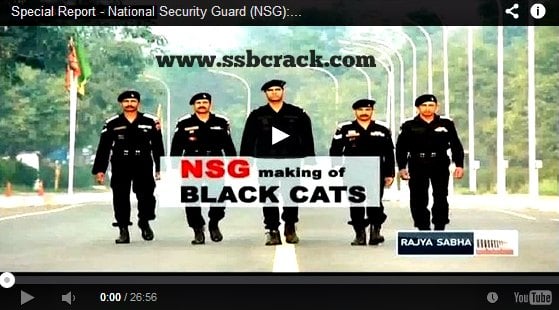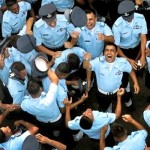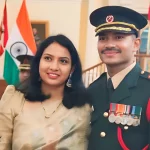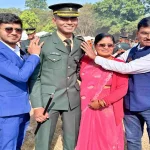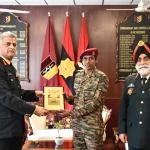“They go, strike, achieve and quietly come back, just like the mythological chakra which would behead the demons and return to the finger of Lord Krishna.” Yes, they are the NSG commandos, The BLACK CATS.
National Security Guard (NSG) is an elite high-profile counter-terrorism and special operations tactical unit in India created by the Cabinet Secretariat under the National Security Guard Act of the Indian Parliament in 1986 and has acquired considerable experience from the intense insurgency operations it has faced – from the present conflict in the state of Kashmir to the cradle of its birth, the state of Punjab.
Adopting a variety of roles from counter-terrorism to hostage rescue to VIP protection, the NSG proudly wears the mantle of being one of the finest counter-terrorist units in all of South Asia. The NSG commandos are popularly known as the Black Cats, because of the black nomex coveralls and balaclavas (head gear) or assault helmets they adorn and their motto is –“One for All, All for One”.
The NSG’s specific goals include
- Neutralization of specific terrorist threats in vital installations or any given area.
- Handling hijacking situations involving piracy in the air and on the land.
- Engaging and neutralizing terrorists in specific situations.
- Rescue of hostages in kidnap situations.
- Bomb disposal (search, detection and neutralization of IEDs).
- PBI (Post Blast Investigation).
NSG Commandos Training Video
Never Miss Another Great Video, Subscribe to SSBCrack
But being one of the finest counter-terrorist units in all of Asia does not come without a price. The NSG simulates hundreds of realistic scenarios in daily drills. With a total strength of approximately 7500 personnel, the NSG is divided into two groups – the Special Action Group (SAG) and the Special Rangers Group (SRG).
The SAG, which comprises 54% of the force, is the elite, offensive wing with members drawn from the Indian Army. The SRG, on the other hand, has members on deputation from central police organizations like the Border Security Force (BSF), the Central Reserve Police Force (CRPF), the Indo-Tibetan Border Police (ITBP) and the Rapid Action Force (RAF). The primary function of the SRG is to play a supportive role to the SAF, especially in isolating target areas.
For maintaining the young profile of the force, troops are rotated and sent back to their parent organizations after serving in the NSG for three to five years. The basic training period at the organization’s training centre at Manesar, 50 km from New Delhi, lasts 90 days. Only those who complete the entire course successfully are inducted into the NSG and given further specialized training.

The probation grind saps the toughest of recruits and the dropout rate is 50 – 70%. For starters there is a
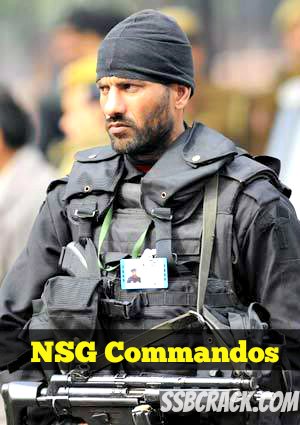
26-item, 780-metre obstacle course, with a qualifying time of 18 minutes. If a person completes the course in 25 minutes, he is deemed fit. The best do it in less than nine minutes. The obstacles have to do with heights, horizontal gaps and vertical scaling and are difficult to tackle in sequence. As if this is not enough, there’s a target shooting session at the end of the obstacle course meant to test the aspirants’ performance under severe stress and exhaustion. Those who complete this course are recruited to the unit and sent for advanced training. Some operators are sent to Israel for advanced training. In the Combat Room Shoot, the combatant enters a dark room, adjusts to the darkness and engages the target with either a torch light or a compatible laser image intensifier – all within 3 seconds.
And not just in darkness but under the strobe lights of a discotheque as well, which are some of the most difficult shots to take. The target exposure time is between two and three seconds and the targets are of all kinds – vertically rising, popping out, moving and rotating. The faster a person engages the target the more points he scores. It is not just non-reactive targets that they practice against. In twin room shooting, rival combatants enter contiguous rooms and watch each other’s movements on a screen. They are supposed to neutralize each other by shooting at the screen. The exercise test the combatants’ response time and accuracy under near-field conditions. The men are also put through a battle inoculation program where they have to stand right next to the target while one of their partners shoots at it.
They have to become used to live bullets flying under their noses. Also the person shooting is conscious that if he misses by even a couple of inches the bullet is going to hit his partner. They don’t wear the kavach either, but a bullet-proof vest. The vest can withstand an AK-47 or a 7.62mm carbine shot at point blank range. Members of the unit are assigned partners soon after completion of basic training and they train and even go on leave together. But as crack professionals, they are under orders to shoot their partner if he makes a single threatening step detrimental to the security of a VIP.
The smallest combat unit in the NSG’s counter-terrorist operation is a “hit” which comprises five members – two pairs, or partners and a technical support member. Four hits make a team which is under the command of a Captain. The number of hits used for an intervention job depends on its complexity and the magnitude of the operation.
The NSG Commandos are dressed to kill. They are armed with an MP-5 sub-machine gun. They use the Heckler & Koch family of 9mm sub-machine guns, the 7.62mm PSG-1 sniper weapon and the Heckler & Koch 512 12-gauge shotgun. Side arms include Glock 17 and Sig Sauer P226 9mm pistols. They are also armed with state-of-the-art surveillance gadgets and other sophisticated equipments. They have played a pivotal role in safeguarding the unity of India and have commendably foiled attempts of anti-national elements to tear apart the social fabric of the country.
Some NSG’s well-known operations:
- 29–30 April 1986, Golden Temple Operation Black Thunder I.
- 12 May 1988, Golden Temple Operation Black Thunder II.
- 24–25 April 1993, Operation Ashwamedh
- 26 November 2008 Mumbai attacks — Operation Black Tornado and Operation Cyclone
Also Read

